RICE FIELDS OF JAPAN .....
AMAZING...

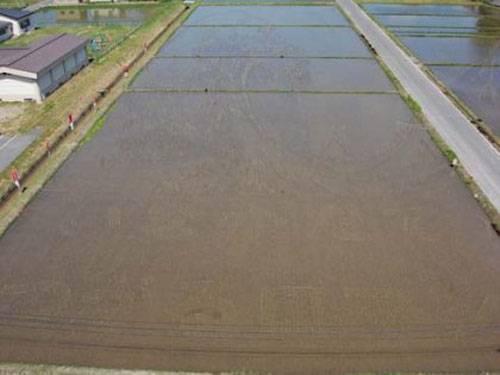
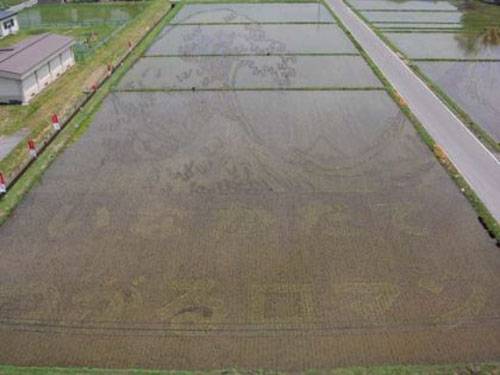
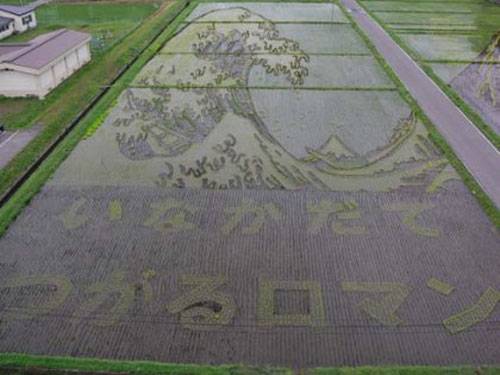
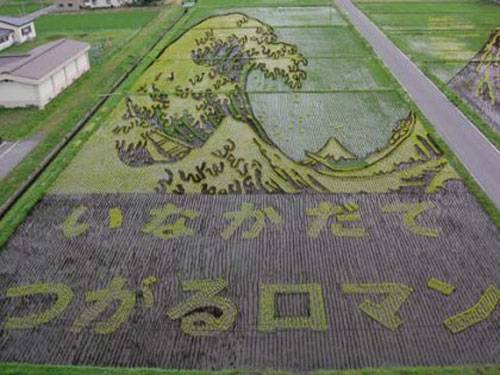
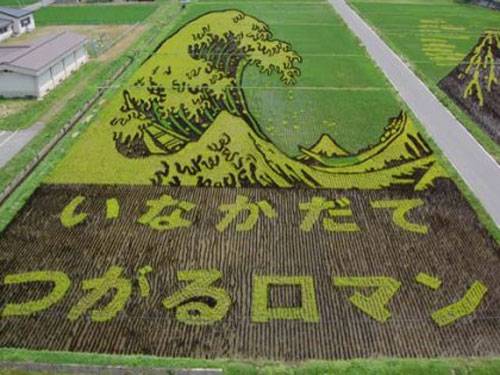
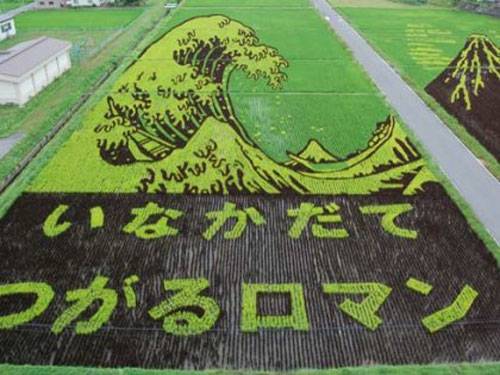
Stunning crop art has sprung up across rice fields in Japan .
But this is no alien creation - the designs have been cleverly planted.
Farmers creating the huge displays use no ink or dye. Instead,
different color's of rice plants have been precisely and strategically arranged and grown in the paddy fields.
As summer progresses and the plants shoot up, the detailed artwork begins to emerge.
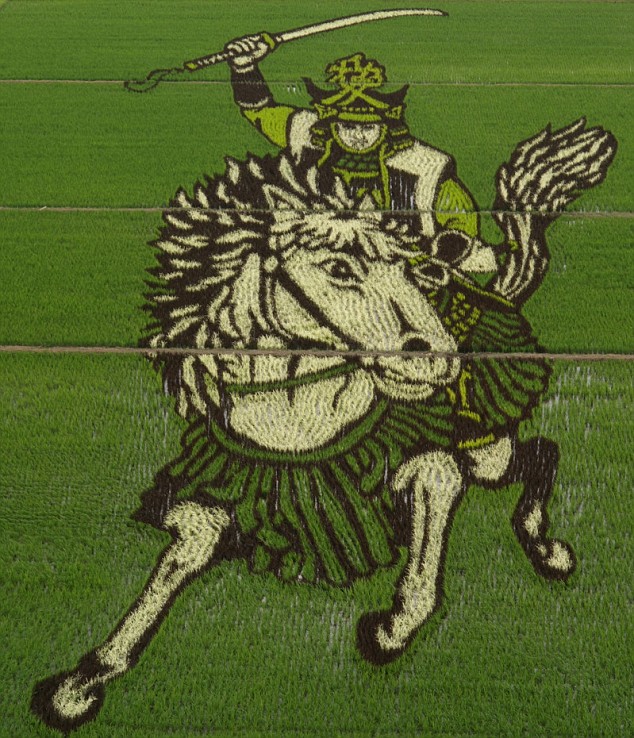
A Sengoku warrior on horseback has been created from hundreds of thousands of rice plants,
the color's created by using different varieties, in Inakadate in Japan
The largest and finest work is grown in the Aomori village of Inakadate, 600 miles north of Tokyo,
where the tradition began in 1993.
The village has now earned a reputation for its agricultural artistry and this year
the enormous pictures of Napoleon and a Sengoku-period warrior,
both on horseback, are visible in a pair of fields adjacent to the town hall.
More than 150,000 vistors come to Inakadate,
where just 8,700 people live, every summer to see the extraordinary murals.
Each year hundreds of volunteers and villagers
plant four different varieties of rice in late May across huge swathes of paddy fields.
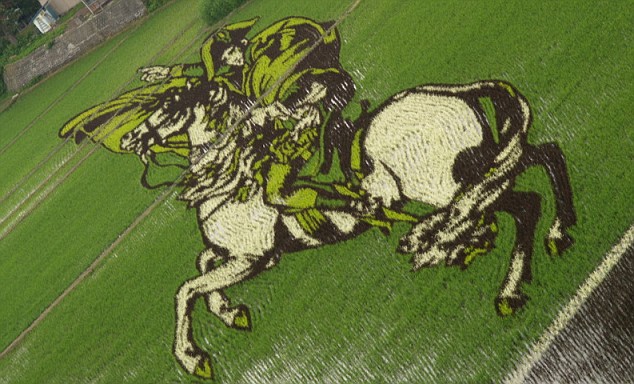
Napolean on horseback can be seen from the skies,
created by precision planting and months of planning between villagers and farmers in Inkadate
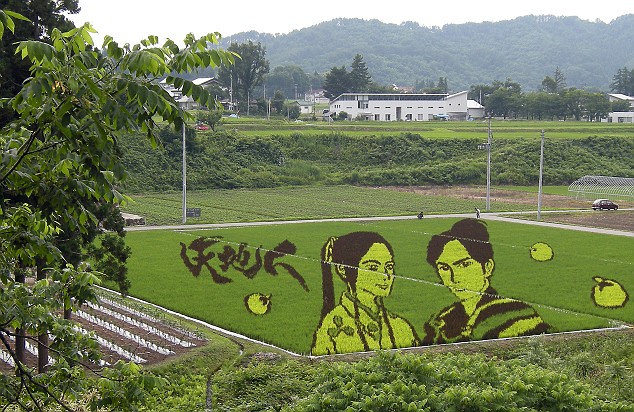
Fictional warrior Naoe Kanetsugu and his wife Osen appear in fields in the town of Yonezawa , Japan
And over the past few years, other villages have joined in with the plant designs.
Another famous rice paddy art venue is in the town of Yonezawa in the Yamagata prefecture.
This year's design shows the fictional 16th-century samurai warrior Naoe Kanetsugu and his wife,
Osen, whose lives feature in television series Tenchijin.
Various artwork has popped up in other rice-farming areas of Japan this year,
including designs of deer dancers.
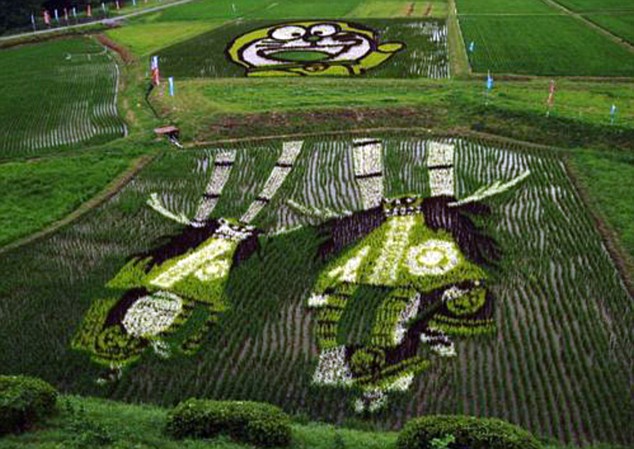
Smaller works of crop art can be seen in other rice-farming areas of Japan such as this image of Doraemon and deer dancers
The farmers create the murals by planting little purple and yellow-leafed kodaimai rice
along with their local green-leafed tsugaru roman variety to create the coloured patterns between planting and harvesting in September.
The murals in Inakadate cover 15,000 square metres of paddy fields.
From ground level, the designs are invisible, and viewers have to climb the mock castle tower of the village office to get a glimpse of the work.
Rice-paddy art was started there in 1993 as a local revitalization project, an idea that grew out of meetings of the village committee.
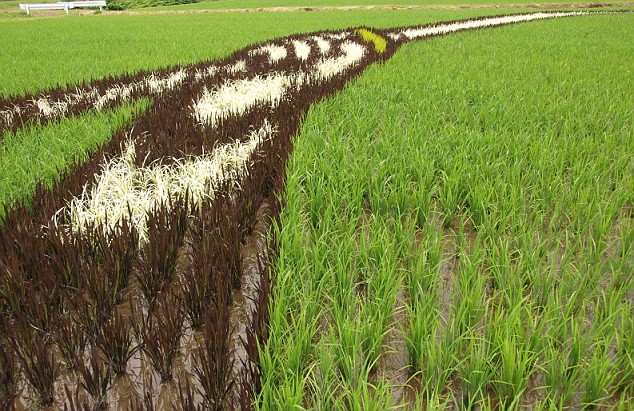
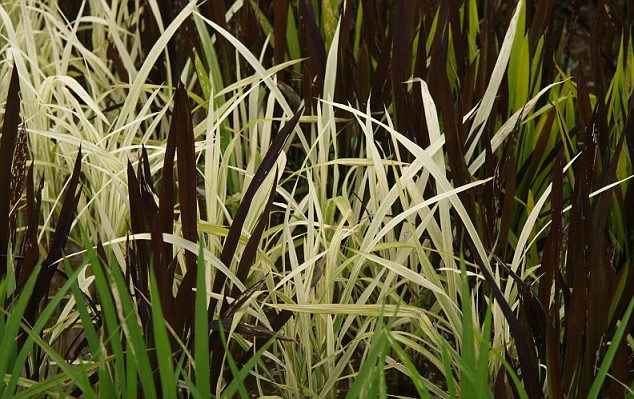
Closer to the image, the careful placement of thousands of rice plants in the paddy fields can be seen
·标签关键字:用稻田做畫 !!!! Rice Field Art 乐趣文章